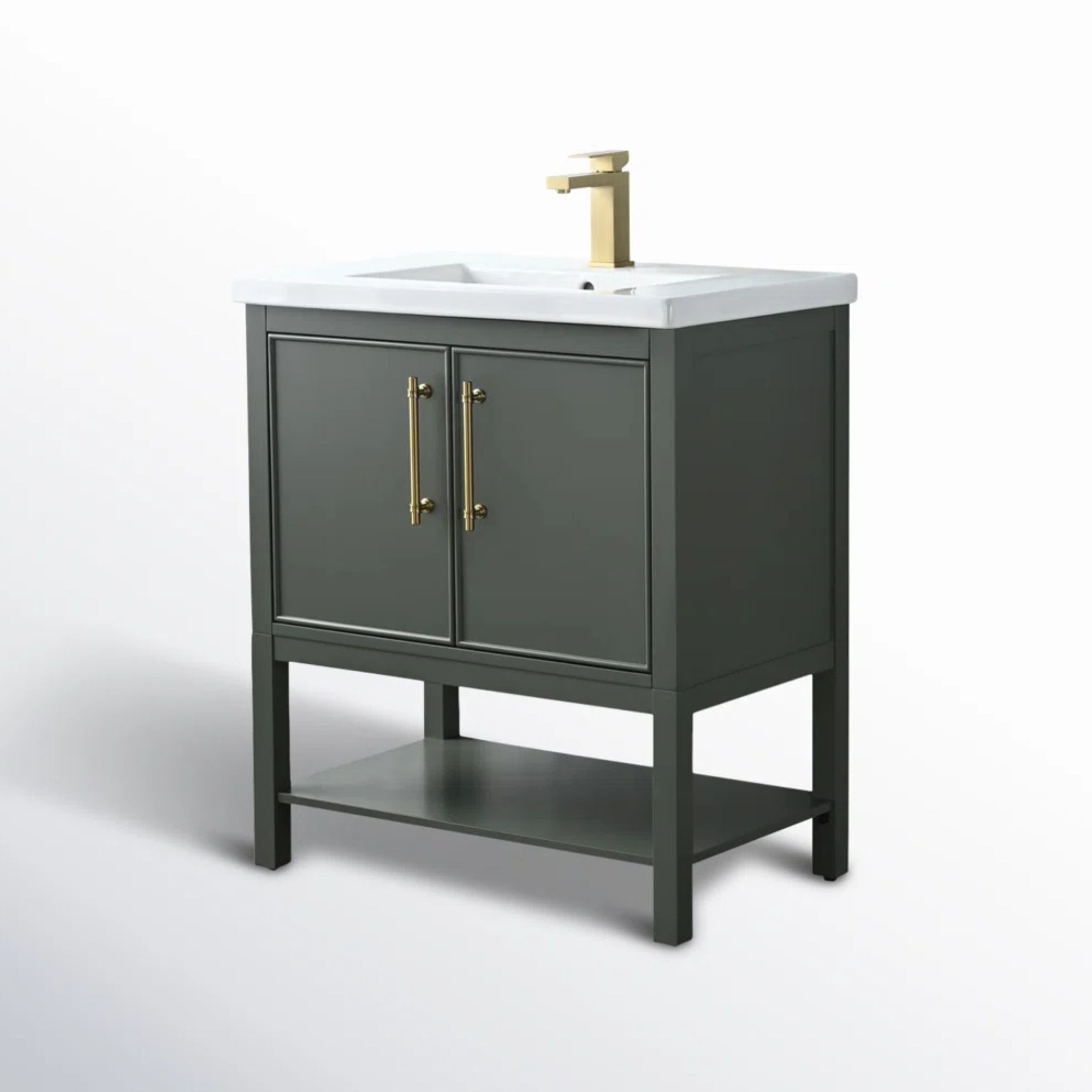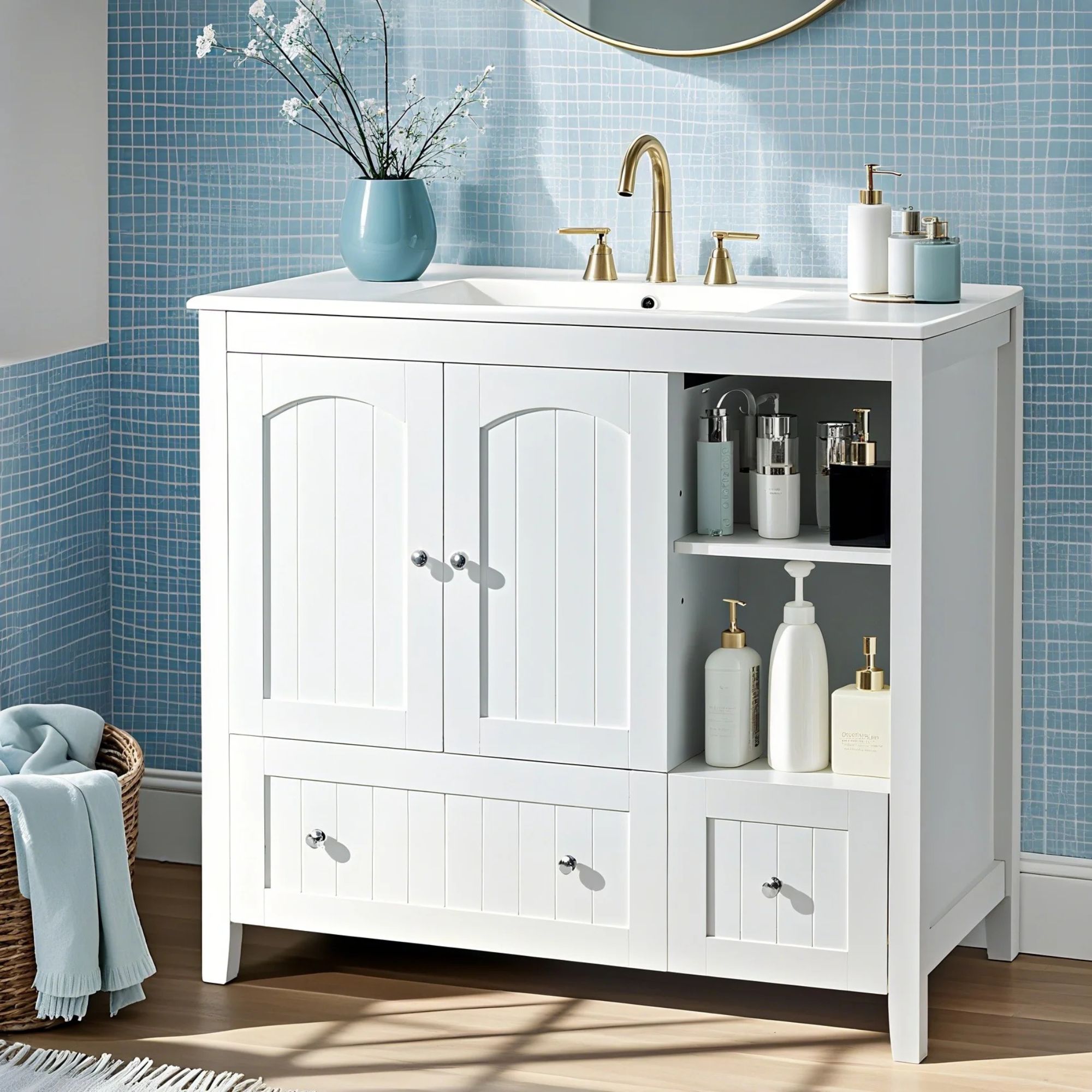I asked interior designers which outdated bathroom vanity colors they are sick of seeing – these are the 5 'predictable' shades they said to avoid
Turns out, any bathroom vanity colors that are unimaginative or too trend-led are out in 2025

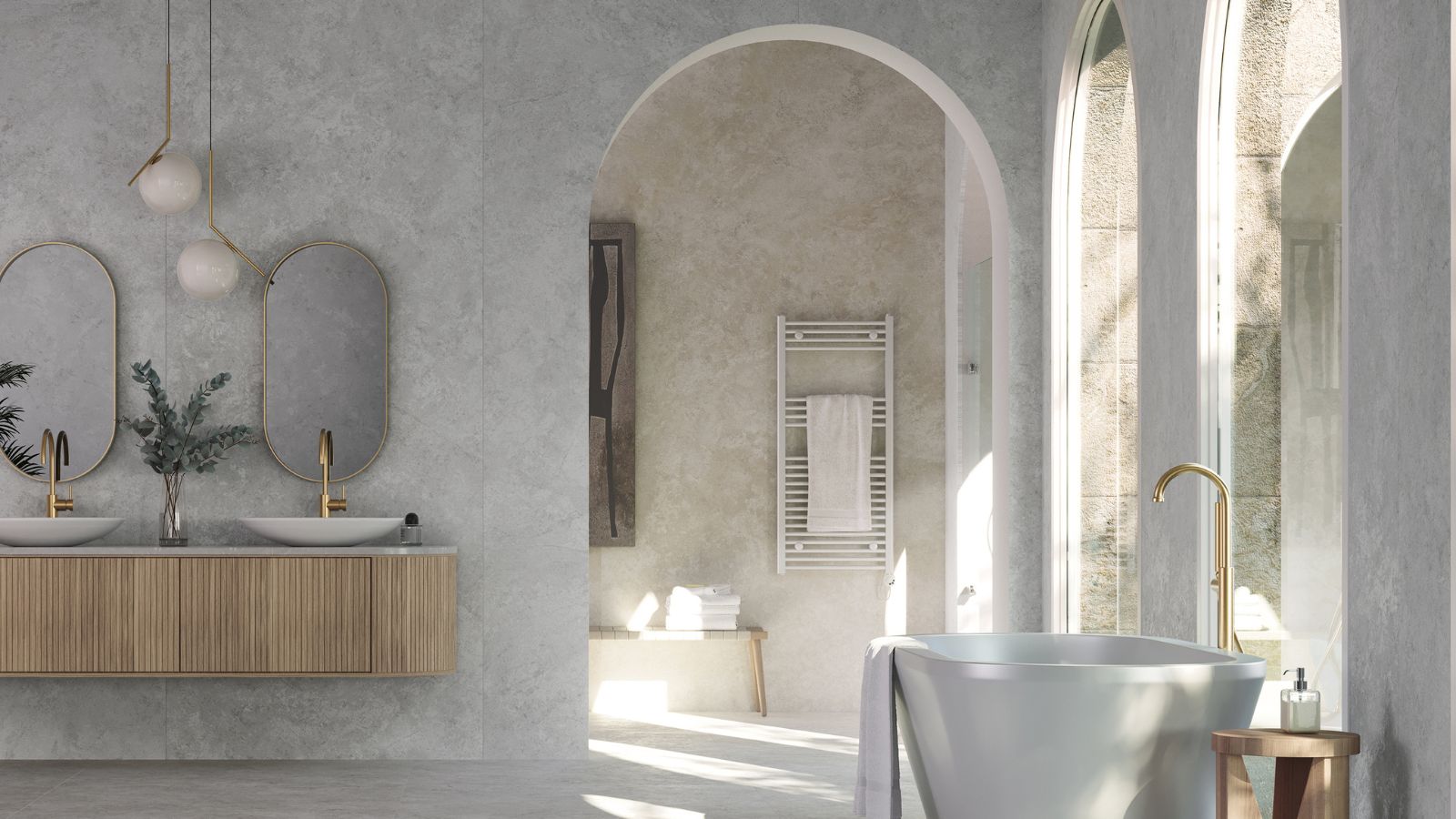
We often spend a lot of time deliberating over wall and tile colors, but the shade of your bathroom vanity is just as essential to the overall look and feel of your space. It's a focal point of the room and one of the most used features, so color is crucial.
The best bathroom vanity colors will elevate your space, while the wrong one will make it feel instantly outdated. And there are a few hues that designers are beginning to find tiresome that you'll want to avoid.
To find out exactly which bathroom vanity shades feel outdated in 2025, I asked interior designers which colors they're sick of seeing, and which we should be trying instead.
5 outdated bathroom vanity colors designers say you should retire
There has been a significant shift in the way we design bathrooms. These rooms have become much more considered, still practical of course, but more lived-in, filled with character and warmth to create an inviting atmosphere. It is no surprise, then, that some vanity colors that were once the go-to choices have begun to feel a bit outdated, and bathroom vanity ideas have become more characterful too.
1. High-gloss white
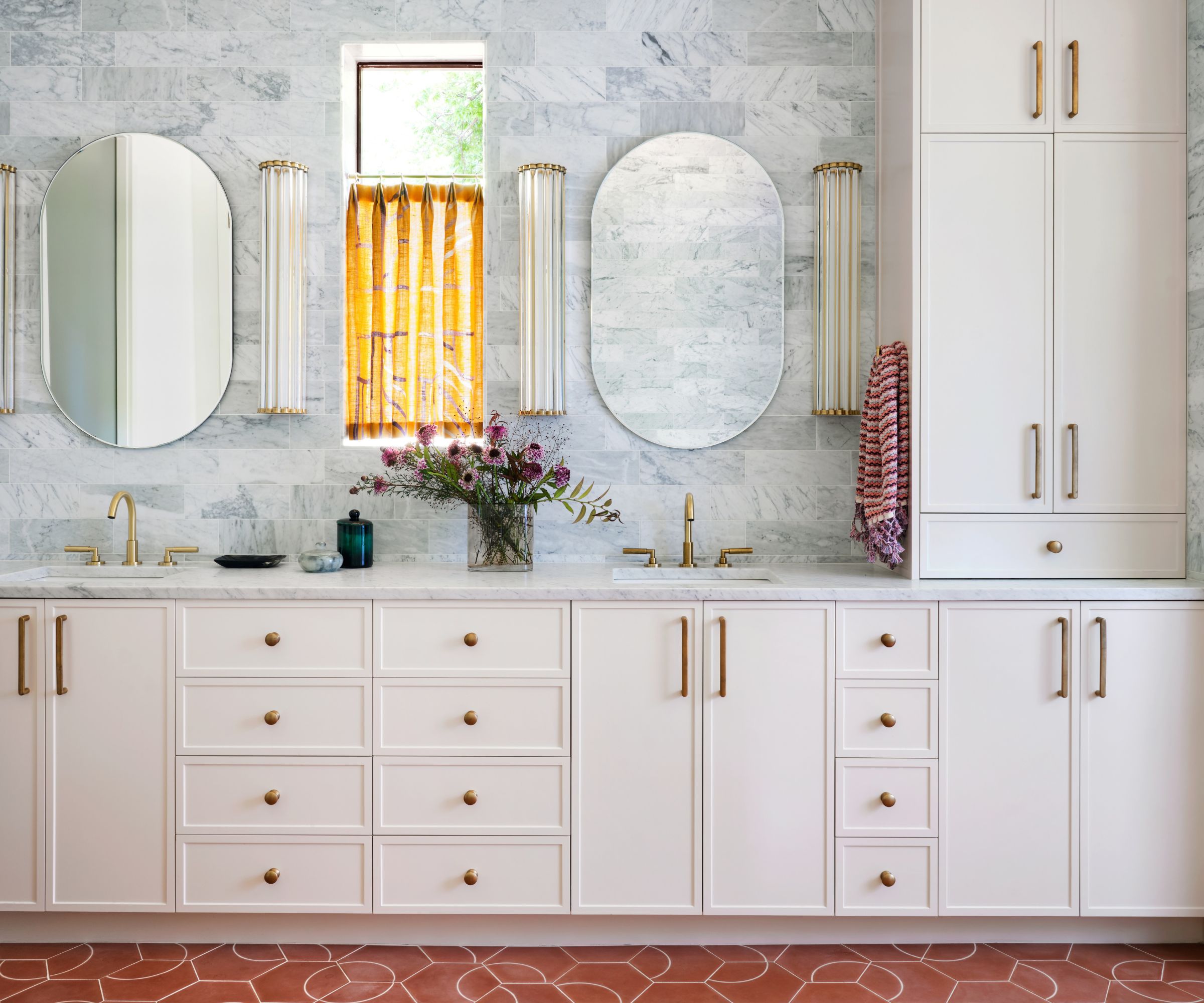
This white bathroom vanity is a stylish example of making a plain color feel more interesting. The micro Shaker paneling paired with a mix of brass hardware adds interest and a timeless feel.
There was a time when a shiny finish on bathroom vanities was the norm, creating a modern bathroom with a minimalist finish. However, it's a look that now feels decidedly outdated, especially in stark colors like brilliant white.
'High-gloss white used to be a staple choice – clean, minimal, and modern – but now it feels a bit cold and one-note, especially as bathrooms evolve into more expressive, design-led spaces. There’s a growing appetite for schemes that feel more layered, personal, and in tune with the character of the wider home,' says Amy Bartlett, creative director at Kast.
'There’s also a move away from overly glossy, reflective surfaces in general, with designers gravitating toward matte finishes and tactile materials that bring a sense of craftsmanship and calm. The overall look is softer, more natural, and far less polished,' she adds.
Design expertise in your inbox – from inspiring decorating ideas and beautiful celebrity homes to practical gardening advice and shopping round-ups.
Instead of high-gloss, embrace matte white hues and design them with lots of texture and interest. 'Use unique details, patterns, finishes, and textures to breathe new life into something that could easily feel dated. Whites tend to feel dull and clinical, so it's about finding interesting ways to contrast that with warmth and character,' says interior designer Lauren Kyle.
2. Light Blue
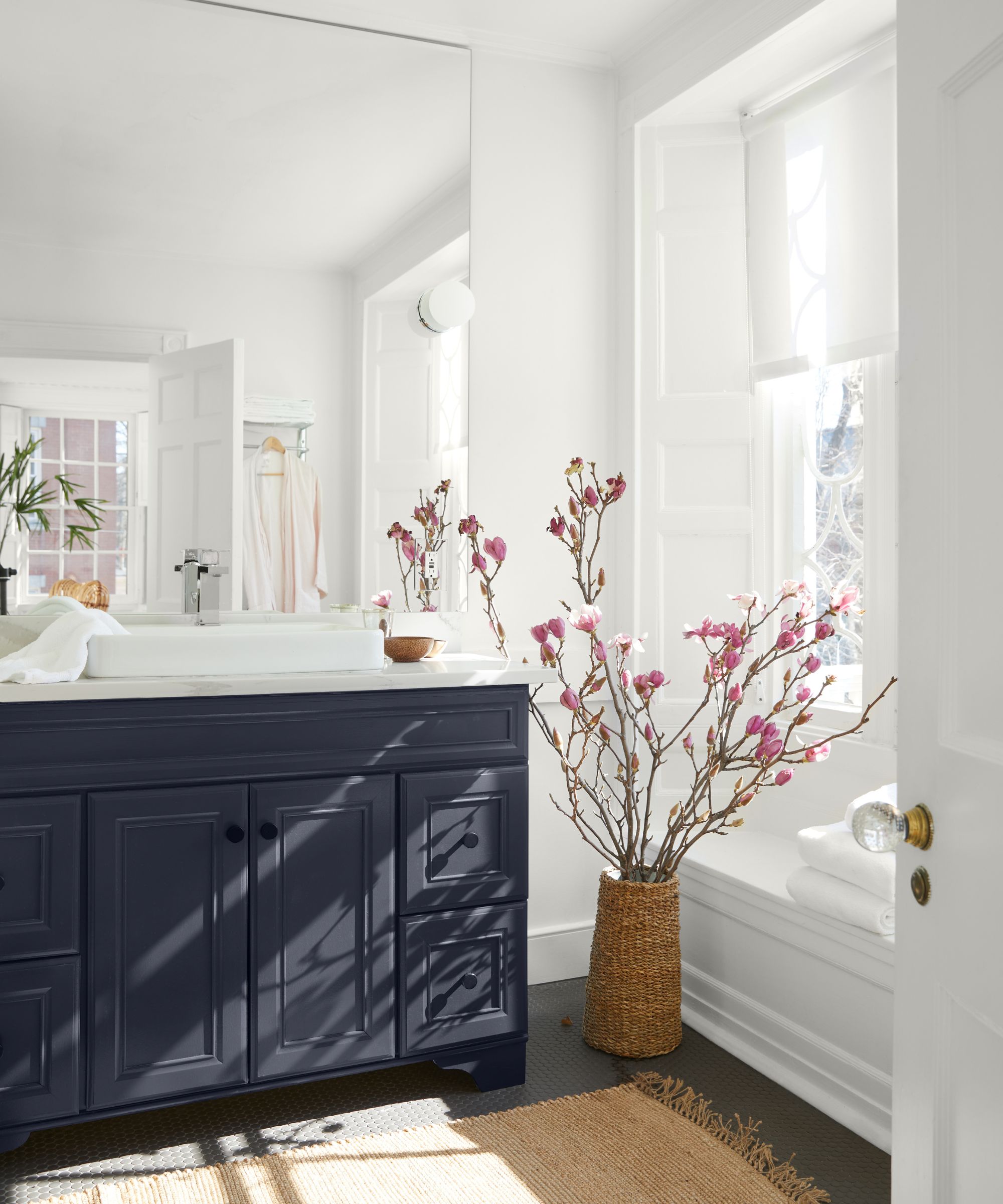
Dark blue always feels more sophisticated than lighter hues, especially in bathrooms. This space proves it can almost act like a neutral when paired with white.
Light blue is a color so often associated with bathrooms. It's especially popular to add a pop of color to a white bathroom, but some designers feel it's become overdone and too expected.
'To me, a light blue bathroom vanity no longer feels fresh,' says interior designer Ellie Christopher. 'Great design should surprise, and that means moving past the predictable. I’d rather pull an unexpected, complex hue from the stone of the vanity countertop – something layered and intriguing – than settle for the safe choice.'
Dark blue is a simple alternative that adds more contrast and timeless appeal, or if you want to create a more exciting scheme without going bold and colorful, less obvious elements like a statement stone or a textural finish are much more impactful.
3. Gray and gray-toned woods
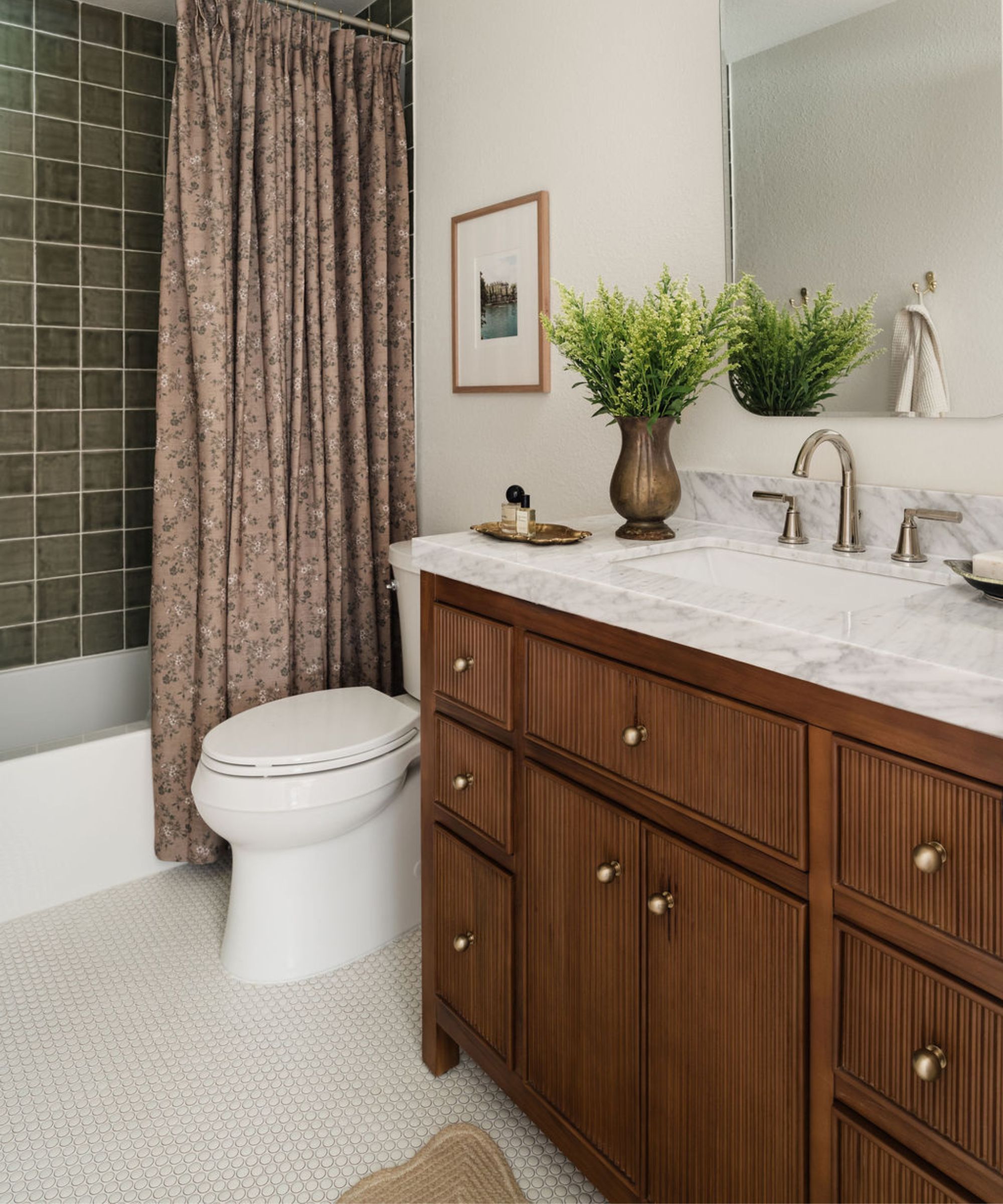
This wooden vanity with a reeded finish is far more elevated and expensive-looking than a gray vanity, and pairs beautifully with a marble top.
For a while, gray bathrooms were the go-to, but it's a vanity color that can feel outdated and completely lacking any sort of personality when not designed with the right hues and materials.
'Gray vanities had their moment as a safe, neutral choice, which was a great alternative to white. But due to overuse, this staple color now feels cold and a little uninspired. Rising trends are all about packing warmth, texture, and personality into home designs, and that generic millennial gray just doesn’t deliver that anymore,' says Miranda Cullen, founder and principal designer of Inside Stories.
'The last thing a bathroom needs is to look colder and more weathered! Gray, especially gray-toned woods, should be the last on your list for a vanity. It feels faux farmhouse, and it adds zero warmth or personality to your bathroom,' agrees Liberty Riggs, founder and principal designer at Morrison Gates.
'I'm over the soulless clinical look of stark white or flat gray. Those safe builder-grade choices may feel clean, but they miss the opportunity to add warmth or character to the space,' adds interior designer Cathryn Lindsey.
Instead, to add warmth and enduring style to your bathroom, embrace a dark wood vanity instead of gray tones. It's much more classic and adds a more characterful look.
4. Trend-led colors
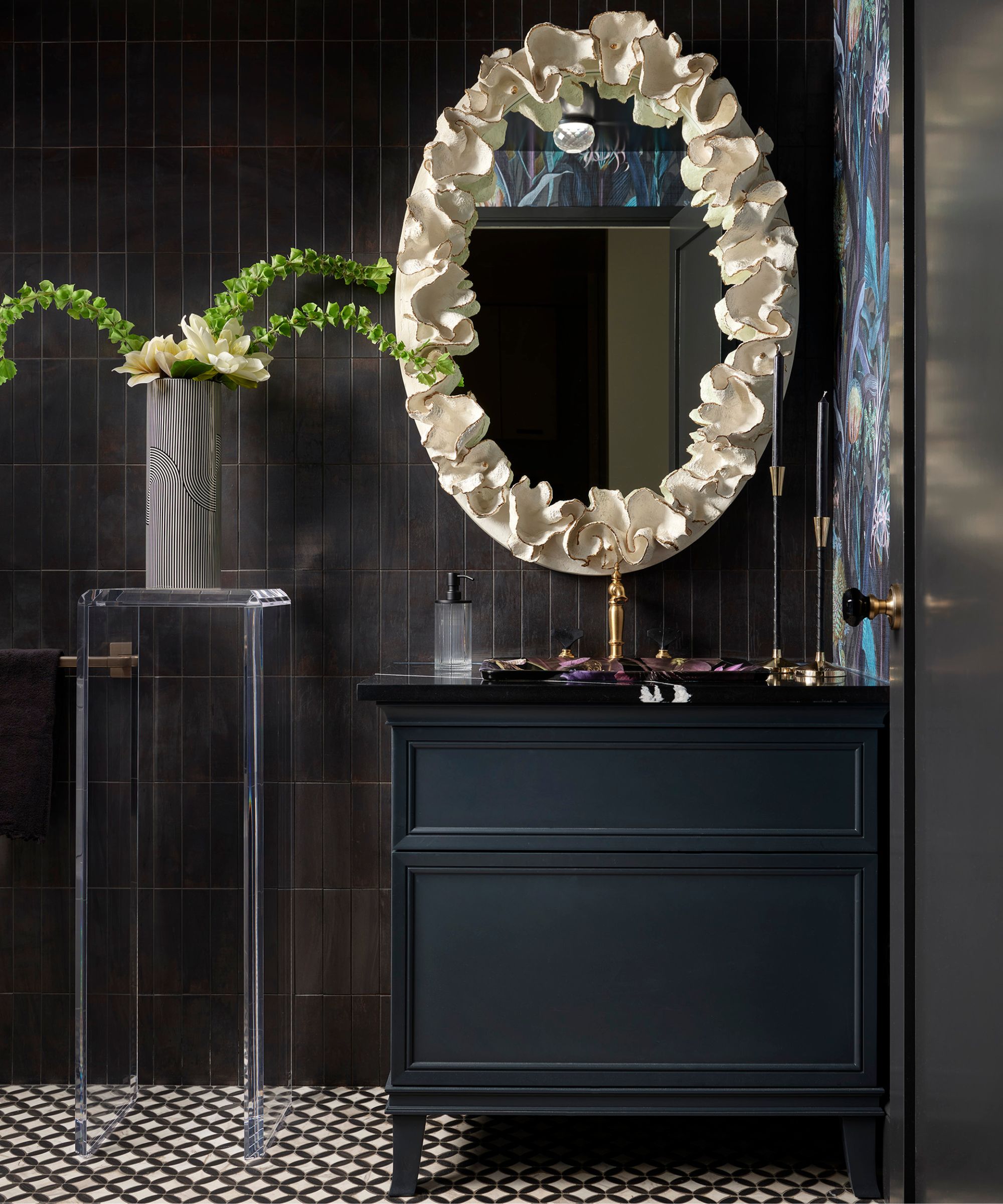
Whether you color-drench your bathroom in moody hues or add a deeper tone just on your vanity, it's a stylish and impactful choice that will actually endure trends.
On the other end of the spectrum, trend-led colors are also starting to feel a bit tiresome for a few designers. There's no denying that 2025 has become the year of characterful interiors that imbue eclectic style and abundant personality.
But in the quest to create a more lived-in aesthetic that feels far from the stark Instagram interiors that dominated the 2010s, some designers feel it's gone a step too far, especially in the bathroom.
'I find myself increasingly tired of seeing bathroom vanities treated like seasonal fashion statements. For me, the most timeless and appropriate finishes are either a natural wood stain or a soft white,' says interior designer Christopher Boutlier.
'There was such a strong reaction to the era of builder-grade white bathrooms that the pendulum swung too far in the other direction. Suddenly, everyone was racing to find the next it color. One year it was navy, now it’s scarlet. We’ve cycled through the entire Arts and Crafts palette and are currently wading through a wave of Deco-inspired tones,' he notes.
5. White oak
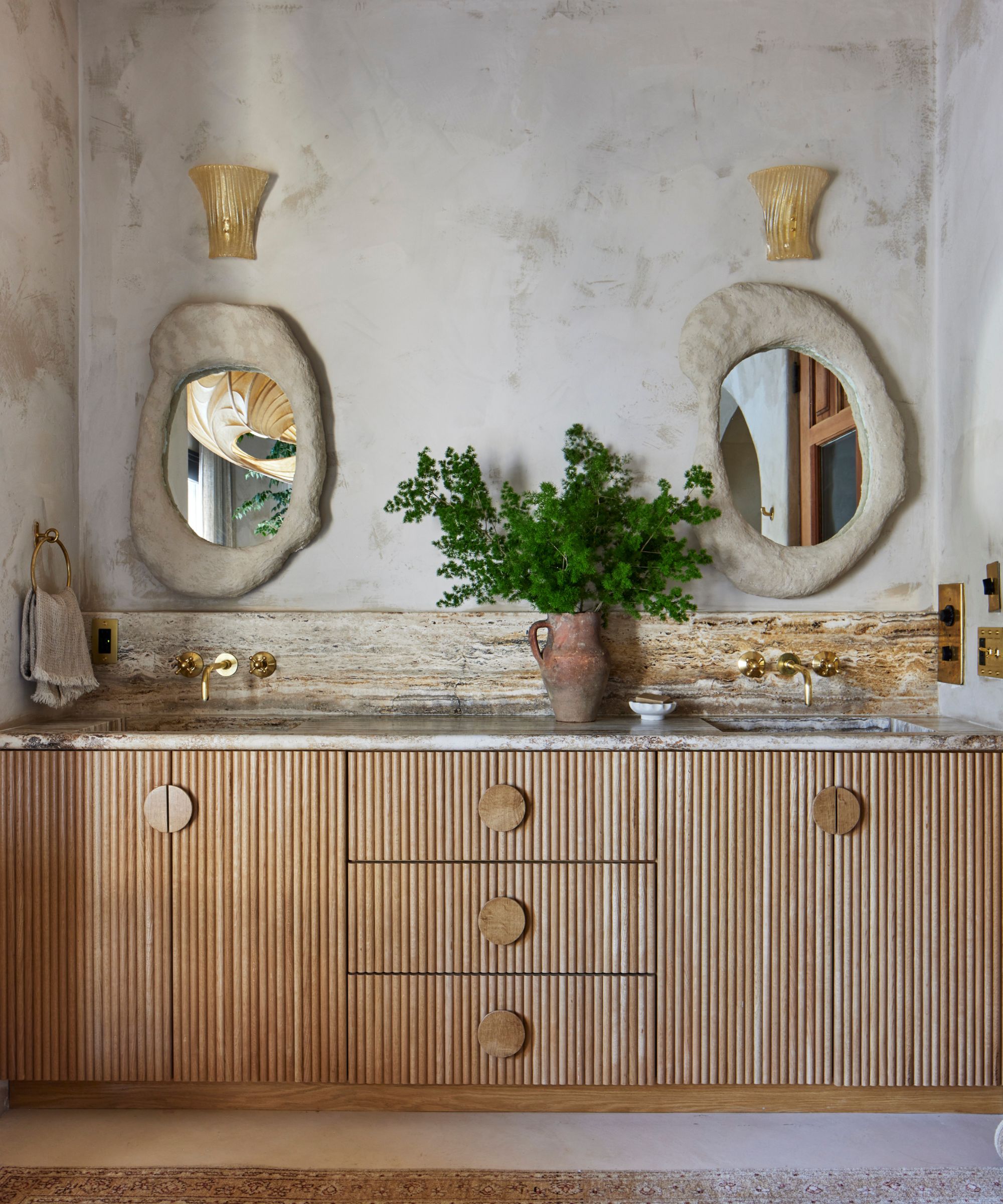
This chic bathroom vanity design still feels natural and neutral, but with far more character than taupe or white oak could create.
Bathroom vanities in rich wood tones are on the rise, and while dark and soft woods are a timeless choice, lighter tones like taupe or white-washed finishes feel like a fleeting trend that is not only unimaginative but one we will look back on in five years with distaste.
'While taupe or white oak vanities are constantly referred to as timeless, I think both of these finishes will be instantly dateable to the 2020s in a few years,' says Liberty, who recommends choosing a vanity color that complements the rest of your bathroom rather than choosing a color based on trendiness or perceived timelessness.
'They're popular because they play well with just about anything else in the room, and can add a bit of warmth to an otherwise cold (often all white) space, but to me, choosing a taupe vanity is about as opinionated as choosing a beige wall or a white sofa. It's a non-choice.'
So, what is a better option? If you have your heart set on a wooden vanity, try going for a richer tone rather than white oak. It's a timeless option that still feels neutral, but with far more character. Mixing materials is another fun way to add interest to your bathroom, like in this design.
'I like to intermix colored limewash paint finishes to the vanity, combined with quartz counters and alluring door pulls! Even subtle creams, tans, and corals feel fresh in comparison to no color used at all. I consider cream to be a tonal variety of white that can add real dimension,' says interior designer Brittny Button.
Shop timeless bathroom vanities
Designing a bathroom vanity requires a careful balance of functionality and timeless style. It's a feature you don't want to keep reconfiguring, so choose colors that make a bathroom look more expensive if you want your scheme to feel elevated and luxurious. And, above all, try to avoid any bathroom colors going out of style – they usually land in the fleeting trend category or bland over-used neutrals.

I’ve worked in the interiors magazine industry for the past five years and joined Homes & Gardens at the beginning of 2024 as the Kitchens & Bathrooms editor. While I love every part of interior design, kitchens and bathrooms are some of the most exciting to design, conceptualize, and write about. There are so many trends, materials, colors, and playful decor elements to explore and experiment with.
